MARKETING
20 Ways to Effectively Increase Your Conversion Rate

Have you ever heard the term “analysis paralysis”? It’s the concept that too many choices can inhibit a person’s ability to make a decision. Visitors to your website can experience this too if there are too many places to look or if there’s a confusing design.
When this happens, visitors won’t convert. Therefore, increasing your conversion rate is beneficial to lowering your cost per acquisition.
Below, let’s review how to increase your conversion rate for both your desktop website and mobile site.
How to Increase Conversion Rate
- Use a CRO planner.
- Shorten your forms.
- Include social proof.
- Track how people interact with your site.
- Add live chat.
- Test your offers.
- Conduct A/B testing.
- Increase trust and remove friction.
- Create abandoned cart email campaigns.
- Communicate your value proposition.
- Incorporate multimedia elements into your landing pages.
- Write strong CTAs.
- Eliminate unnecessary distractions.
- Meet your audience’s expectations.
- Improve your page speed.
- Optimize for mobile.
- Enhance the purchasing process.
- Be creative with your mobile marketing.
- Make adjustments to your mobile site.
- Localize your content.
How to Increase Conversion Rate on Your Website
1. Use a CRO planner.
Getting started with conversion rate optimization can seem like a daunting task.
The first step to improving your conversion rate? Use a CRO planner.
With a CRO planner, you’ll be able to analyze and develop a strategy for increasing your conversion rate.
For example, with HubSpot CRO planner, you’ll find instructions on how to conduct a site audit, identify areas to improve your conversion funnel, understand users on your site, and go through the process of A/B testing and experimentation.
CRO planners can be helpful because they take through the entire process from A to Z.
2. Shorten your forms.
One reason that users don’t convert is because there’s friction in the process. For example, if you have a long-form, visitors might be hesitant to fill it out.
It’s your job to eliminate hesitation, not create it. By shortening your forms, you’ll create trust among your audience. Plus, it takes less time to fill out so users are more likely to complete it.
3. Include social proof.
Did you know that 89% of consumers check online reviews before making a purchase? The Canvas8 study commissioned by Trustpilot also found 49% of consumers consider positive reviews one of their top three purchase influences. Without a doubt, your reputation and online presence impact your conversion rate. That’s why you should include social proof on your site.
You can link to your Yelp or any other directory page where customers have left reviews.
Additionally, you should also add testimonials and reviews right on your site so visitors don’t have to go to a third-party site.
It should be apparent that your customers have enjoyed using your product or service. If it isn’t, your conversion rate will suffer.
4. Track how people interact with your site.
It’ll be hard to improve your conversion rate if you don’t understand how users are interacting with your site.
But how can you see where visitors are getting tripped up? With website analysis tools, you can see screen recordings of users on your site. You’ll see what they click on, if they skip over an offer, or if they stop filling out a form in the middle.
Additionally, these tools should include heat maps of your site, so you can see what elements stand out and what draws the eye.
A tool like Crazy Egg or HubSpot’s website grader can help you see what you’re doing well and diagnose what areas of your site you need to improve. You should also calculate your conversion rate and analyze why visitors aren’t converting on your site.
5. Add live chat.
When a web visitor doesn’t convert, they might have a question or concern about your product or service.

To avoid losing potential customers, you should consider adding live chat to your site.
With live chat, your customer service or sales employees can alleviate concerns of prospects who are on the fence.
6. Test your offers.
Sometimes it can feel like you’ve checked everything — you’ve written a strong copy, included social proof, and have optimized your forms … but you still aren’t converting.
When this happens, it’s time to check your content offers. Do they align with your audience? Are they creative and compelling? Do the offers make sense for the page they’re on?
Think about your current offers and answer those questions.
For example, offering a free trial or consultation is fairly generic. Instead, you could offer something like HubSpot’s Website Grader. With this offer, the customer is getting a lot out of it. They’re getting actionable advice, for free, and they don’t need to clear out time on their calendar to get it.
Tangible and compelling offers always perform better than a generic offer. To improve conversions, you need to analyze and test your content offers.
7. Conduct A/B testing.
It’s not always easy to know what’s working and what isn’t. When that happens, you should conduct A/B tests.
See what types of headlines, colors, copy, layout, and CTAs work for your audience. Get creative with your experiments.
For example, you can try testing an entirely new type of CTA or completely changing the format of your copy.
8. Increase trust and remove friction.
Users don’t convert if they don’t trust your brand or experience friction in the process.
So, how can you increase trust?
You can use several tactics, including money-back guarantees, updating your site content regularly, avoiding spammy links, and making the site easy to use.
If it looks like you haven’t posted a blog in two years or there are a lot of broken links — that’s friction and it creates distrust.
Additionally, you can include team bios so your audience knows who they’re getting information from.
9. Create abandoned cart email campaigns.
Have you ever been on a site, added something to your cart, but decided not to check out? We all do it and that means it’s probably happening on your site too.
You shouldn’t forget about those potential customers. If someone abandons their cart, they should receive an abandoned cart email campaign.
With this type of email campaign, you’ll email users a reminder about the products in their cart, send a follow-up, and then perhaps include a discount or offer.
If you don’t send this email, you’re losing out on conversions.
How to Increase Landing Page Conversion Rate
10. Communicate your value proposition.
On any landing page, your value proposition should be clearly communicated. To do this, you need to have a solid understanding of who your audience is and your buyer persona.
Write your copy specifically for your target audience. For example, you can address their goals, motivations, and pain points.
Additionally, you should discuss the benefits of your product or service over the features. Benefits will help your potential customers imagine their life with your product, while features are easy to skim and ignore.
Your copy should communicate how your product or service can solve your audience’s problem. If you aren’t converting, you should check and see how well your copy is written.
11. Incorporate multimedia elements into your landing pages.
Have you ever ordered something at a restaurant and when it came out, it looked completely different than what you imagined?
You don’t want this to happen when people download your content offers. To avoid this, include images and videos of your product or service on your landing pages.
Multimedia elements make your site feel more trustworthy. Plus, it’s the preferred way of consuming content.
To improve your conversion rate, try adding images of graphs and charts, or video testimonials to your site.
12. Write strong CTAs.
A huge component of conversion is your call-to-action (CTA). Your CTA could be to download an offer, share a post on social media, or subscribe to your email newsletter.
Whatever it is, you need to include CTAs throughout your website and landing pages. Usually, this means that they’re clear and easily accessible.
“Marketers need to take a Goldilocks approach when it comes to placing CTAs since sometimes, one placement isn’t enough,” explains AJ Beltis, HubSpot’s Senior Marketing Manager. “But it’s very easy to have a CTA appear so often as to appear spammy to website visitors.”
Typically, each landing page will only have one call to action but be incorporated several times on a page. For example, this blog post has three CTAs that lead to one offer. One at the bottom of the page, one in the text in the introduction, and one that pops up after scrolling down the page.
Typically, the sooner a CTA can appear on a page, the better, Beltis says. Otherwise, you run the risk of visitors who don’t scroll down far enough missing the conversion point entirely.
The important thing to note is that you can access the CTA no matter where you are on the page. Removing risk for the visitor (like offering a guarantee) and communicating that message clearly in your CTA will encourage them to take action.
13. Eliminate unnecessary distractions.
Speaking of CTAs … it’s important to remove anything on your landing page that would detract from visitors taking a preferred action. Get rid of any unnecessary links, pop-ups or navigation options that could potentially divert a visitor’s attention away.
A busy or cluttered page is less likely to convert visitors. You only have a few seconds to win them over, and a page that’s hard to navigate will discourage them from sticking around.
Design a page that encourages visitors to click your CTA using visual hierarchy to your advantage.
14. Meet your audience’s expectations.
When someone clicks on your site after reading your meta description on Google or seeing your search engine ad, your landing page needs to follow through.
You have to deliver on the promises that were made in that copy. For example, if a user sees this post in Google, they’re going to expect to find strategies to improve their conversion rate. If they clicked through and this page only had pictures of puppies, they’d be confused.
If a landing page doesn’t deliver on what a user thought they were getting, they won’t convert. That’s why you need to think about the entire process from seeing an ad, going to your landing page, and downloading an offer.
If a landing page isn’t converting, review your social media posts and search engine descriptions to see if you follow through on the promises you made.
How to Increase Mobile Conversion Rate
15. Improve your page speed.
When it comes to mobile conversion, a huge obstacle is page speed. This is the time it takes for your content to appear on the screen.
Did you know that 40% of people abandon sites that take more than 3 seconds to load? On mobile specifically, a one-second delay in page response can result in a 7% reduction in conversions.
If your mobile page isn’t converting as well, analyze your page speed with Google’s PageSpeed tools. This will test your mobile page speed.
To improve your page speed, images need to be smaller and compressed. Additionally, your site should be responsive and optimized for mobile.
16. Optimize for mobile.
Since Google switched to mobile-first indexing, mobile optimization has been more important than ever. If you don’t optimize for mobile, your Google rankings might be impacted, which could reduce conversions.
You might be wondering, “How do I optimize my site for mobile?”
Before you begin, it’s important to remember that mobile and desktop experiences are different.
You can use Google’s mobile testing tool to see if your site is mobile-friendly. With this tool, you’ll get recommendations for how to improve your site’s mobile performance.
For example, you might need to increase your font on mobile, compress your images, or improve page speed.
17. Enhance the purchasing process.
Making a purchase on your phone should be a simple process.
That means you shouldn’t have too many steps in your checkout process and your payment buttons should be easy to see and click.
Additionally, try to remove restrictions on online forms where you gather payment information. Personally, I’m always stopped on mobile forms because the name of my city is too long (22 characters).
Users should be able to check out as a guest and use whatever payment method they want, whether that’s Google Pay, Apple Pay, or PayPal.
Ultimately, this process should be easy and pain-free. A complicated checkout process will reduce mobile conversions.
18. Be creative with your mobile marketing.
When you want to increase your mobile conversion rate, that doesn’t just mean you need to adapt your site to the mobile experience.
You can also start to get creative and run mobile-only marketing campaigns.
For example, maybe you can start an SMS text message campaign, or you can use push notifications on your app.
These creative, out-of-the-box techniques can help increase your mobile conversion rate.
19. Make adjustments to your mobile site.
Since the mobile and desktop experiences are different, your mobile and desktop sites should be different.
For example, your email subscriber form might be smaller or nonexistent on your mobile site.
Additionally, you’ll probably use different CTAs on your mobile site. For instance, when you read this blog, the website and mobile have different types of CTAs. While the offer is the same, the button and the way to access the CTA aren’t.
On mobile, less is more. Your mobile site should be simple and eliminate distractions. This can mean you have simplified navigation and use a hamburger menu so it’s easy to get around your site.
20. Localize your content.
Mobile users are usually on your site because they’re looking for contact information, want to know your location, find directions, or look up reviews.
That’s why you should optimize for local marketing. This means adding location pages to your website, managing your online directory listings, and creating local content.
To improve your mobile conversion rates, consider localizing your content so you perform better in local searches.
Before I sign off, I want to remind you that many of the tactics for improving your website’s conversion rate can be applied to mobile CRO.
Empathize With Customers
At the end of the day, we’ve all been consumers before. Take a step back, look at the bigger picture, put yourself in your customer’s shoes, and think about whether you would make a purchase off your site.
This article was originally published May 25, 2020, and has been updated for comprehensiveness.
Source link
MARKETING
Streamlining Processes for Increased Efficiency and Results

How can businesses succeed nowadays when technology rules? With competition getting tougher and customers changing their preferences often, it’s a challenge. But using marketing automation can help make things easier and get better results. And in the future, it’s going to be even more important for all kinds of businesses.
So, let’s discuss how businesses can leverage marketing automation to stay ahead and thrive.
Benefits of automation marketing automation to boost your efforts
First, let’s explore the benefits of marketing automation to supercharge your efforts:
Marketing automation simplifies repetitive tasks, saving time and effort.
With automated workflows, processes become more efficient, leading to better productivity. For instance, automation not only streamlines tasks like email campaigns but also optimizes website speed, ensuring a seamless user experience. A faster website not only enhances customer satisfaction but also positively impacts search engine rankings, driving more organic traffic and ultimately boosting conversions.
Automation allows for precise targeting, reaching the right audience with personalized messages.
With automated workflows, processes become more efficient, leading to better productivity. A great example of automated workflow is Pipedrive & WhatsApp Integration in which an automated welcome message pops up on their WhatsApp
within seconds once a potential customer expresses interest in your business.
Increases ROI
By optimizing campaigns and reducing manual labor, automation can significantly improve return on investment.
Leveraging automation enables businesses to scale their marketing efforts effectively, driving growth and success. Additionally, incorporating lead scoring into automated marketing processes can streamline the identification of high-potential prospects, further optimizing resource allocation and maximizing conversion rates.
Harnessing the power of marketing automation can revolutionize your marketing strategy, leading to increased efficiency, higher returns, and sustainable growth in today’s competitive market. So, why wait? Start automating your marketing efforts today and propel your business to new heights, moreover if you have just learned ways on how to create an online business
How marketing automation can simplify operations and increase efficiency
Understanding the Change
Marketing automation has evolved significantly over time, from basic email marketing campaigns to sophisticated platforms that can manage entire marketing strategies. This progress has been fueled by advances in technology, particularly artificial intelligence (AI) and machine learning, making automation smarter and more adaptable.
One of the main reasons for this shift is the vast amount of data available to marketers today. From understanding customer demographics to analyzing behavior, the sheer volume of data is staggering. Marketing automation platforms use this data to create highly personalized and targeted campaigns, allowing businesses to connect with their audience on a deeper level.
The Emergence of AI-Powered Automation
In the future, AI-powered automation will play an even bigger role in marketing strategies. AI algorithms can analyze huge amounts of data in real-time, helping marketers identify trends, predict consumer behavior, and optimize campaigns as they go. This agility and responsiveness are crucial in today’s fast-moving digital world, where opportunities come and go in the blink of an eye. For example, we’re witnessing the rise of AI-based tools from AI website builders, to AI logo generators and even more, showing that we’re competing with time and efficiency.
Combining AI-powered automation with WordPress management services streamlines marketing efforts, enabling quick adaptation to changing trends and efficient management of online presence.
Moreover, AI can take care of routine tasks like content creation, scheduling, and testing, giving marketers more time to focus on strategic activities. By automating these repetitive tasks, businesses can work more efficiently, leading to better outcomes. AI can create social media ads tailored to specific demographics and preferences, ensuring that the content resonates with the target audience. With the help of an AI ad maker tool, businesses can efficiently produce high-quality advertisements that drive engagement and conversions across various social media platforms.
Personalization on a Large Scale
Personalization has always been important in marketing, and automation is making it possible on a larger scale. By using AI and machine learning, marketers can create tailored experiences for each customer based on their preferences, behaviors, and past interactions with the brand.
This level of personalization not only boosts customer satisfaction but also increases engagement and loyalty. When consumers feel understood and valued, they are more likely to become loyal customers and brand advocates. As automation technology continues to evolve, we can expect personalization to become even more advanced, enabling businesses to forge deeper connections with their audience. As your company has tiny homes for sale California, personalized experiences will ensure each customer finds their perfect fit, fostering lasting connections.
Integration Across Channels
Another trend shaping the future of marketing automation is the integration of multiple channels into a cohesive strategy. Today’s consumers interact with brands across various touchpoints, from social media and email to websites and mobile apps. Marketing automation platforms that can seamlessly integrate these channels and deliver consistent messaging will have a competitive edge. When creating a comparison website it’s important to ensure that the platform effectively aggregates data from diverse sources and presents it in a user-friendly manner, empowering consumers to make informed decisions.
Omni-channel integration not only betters the customer experience but also provides marketers with a comprehensive view of the customer journey. By tracking interactions across channels, businesses can gain valuable insights into how consumers engage with their brand, allowing them to refine their marketing strategies for maximum impact. Lastly, integrating SEO services into omni-channel strategies boosts visibility and helps businesses better understand and engage with their customers across different platforms.
The Human Element
While automation offers many benefits, it’s crucial not to overlook the human aspect of marketing. Despite advances in AI and machine learning, there are still elements of marketing that require human creativity, empathy, and strategic thinking.
Successful marketing automation strikes a balance between technology and human expertise. By using automation to handle routine tasks and data analysis, marketers can focus on what they do best – storytelling, building relationships, and driving innovation.
Conclusion
The future of marketing automation looks promising, offering improved efficiency and results for businesses of all sizes.
As AI continues to advance and consumer expectations change, automation will play an increasingly vital role in keeping businesses competitive.
By embracing automation technologies, marketers can simplify processes, deliver more personalized experiences, and ultimately, achieve their business goals more effectively than ever before.
MARKETING
Will Google Buy HubSpot? | Content Marketing Institute
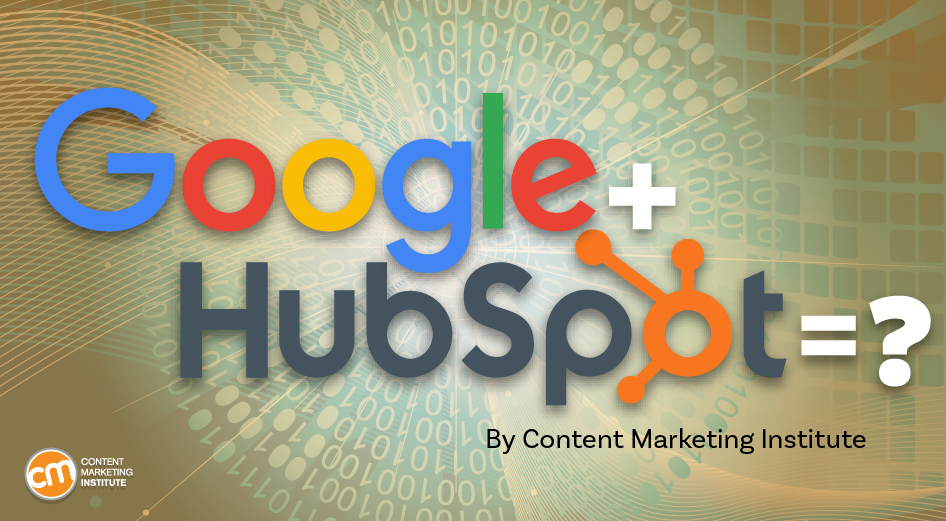
Google + HubSpot. Is it a thing?
This week, a flurry of news came down about Google’s consideration of purchasing HubSpot.
The prospect dismayed some. It delighted others.
But is it likely? Is it even possible? What would it mean for marketers? What does the consideration even mean for marketers?
Well, we asked CMI’s chief strategy advisor, Robert Rose, for his take. Watch this video or read on:
Why Alphabet may want HubSpot
Alphabet, the parent company of Google, apparently is contemplating the acquisition of inbound marketing giant HubSpot.
The potential price could be in the range of $30 billion to $40 billion. That would make Alphabet’s largest acquisition by far. The current deal holding that title happened in 2011 when it acquired Motorola Mobility for more than $12 billion. It later sold it to Lenovo for less than $3 billion.
If the HubSpot deal happens, it would not be in character with what the classic evil villain has been doing for the past 20 years.
At first glance, you might think the deal would make no sense. Why would Google want to spend three times as much as it’s ever spent to get into the inbound marketing — the CRM and marketing automation business?
At a second glance, it makes a ton of sense.
I don’t know if you’ve noticed, but I and others at CMI spend a lot of time discussing privacy, owned media, and the deprecation of the third-party cookie. I just talked about it two weeks ago. It’s really happening.
All that oxygen being sucked out of the ad tech space presents a compelling case that Alphabet should diversify from third-party data and classic surveillance-based marketing.
Yes, this potential acquisition is about data. HubSpot would give Alphabet the keys to the kingdom of 205,000 business customers — and their customers’ data that almost certainly numbers in the tens of millions. Alphabet would also gain access to the content, marketing, and sales information those customers consumed.
Conversely, the deal would provide an immediate tip of the spear for HubSpot clients to create more targeted programs in the Alphabet ecosystem and upload their data to drive even more personalized experiences on their own properties and connect them to the Google Workspace infrastructure.
When you add in the idea of Gemini, you can start to see how Google might monetize its generative AI tool beyond figuring out how to use it on ads on search results pages.
What acquisition could mean for HubSpot customers
I may be stretching here but imagine this world. As a Hubspoogle customer, you can access an interface that prioritizes your owned media data (e.g., your website, your e-commerce catalog, blog) when Google’s Gemini answers a question).
Recent reports also say Google may put up a paywall around the new premium features of its artificial intelligence-powered Search Generative Experience. Imagine this as the new gating for marketing. In other words, users can subscribe to Google’s AI for free, but Hubspoogle customers can access that data and use it to create targeted offers.
The acquisition of HubSpot would immediately make Google Workspace a more robust competitor to Microsoft 365 Office for small- and medium-sized businesses as they would receive the ADDED capability of inbound marketing.
But in the world of rented land where Google is the landlord, the government will take notice of the acquisition. But — and it’s a big but, I cannot lie (yes, I just did that). The big but is whether this acquisition dance can happen without going afoul of regulatory issues.
Some analysts say it should be no problem. Others say, “Yeah, it wouldn’t go.” Either way, would anybody touch it in an election year? That’s a whole other story.
What marketers should realize
So, what’s my takeaway?
It’s a remote chance that Google will jump on this hard, but stranger things have happened. It would be an exciting disruption in the market.
The sure bet is this. The acquisition conversation — as if you needed more data points — says getting good at owned media to attract and build audiences and using that first-party data to provide better communication and collaboration with your customers are a must.
It’s just a matter of time until Google makes a move. They might just be testing the waters now, but they will move here. But no matter what they do, if you have your customer data house in order, you’ll be primed for success.
HANDPICKED RELATED CONTENT:
Cover image by Joseph Kalinowski/Content Marketing Institute
MARKETING
5 Psychological Tactics to Write Better Emails
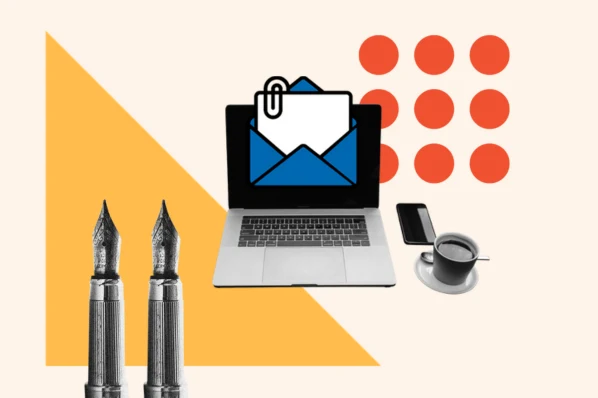
Welcome to Creator Columns, where we bring expert HubSpot Creator voices to the Blogs that inspire and help you grow better.
I’ve tested 100s of psychological tactics on my email subscribers. In this blog, I reveal the five tactics that actually work.
You’ll learn about the email tactic that got one marketer a job at the White House.
You’ll learn how I doubled my 5 star reviews with one email, and why one strange email from Barack Obama broke all records for donations.
5 Psychological Tactics to Write Better Emails
Imagine writing an email that’s so effective it lands you a job at the White House.
Well, that’s what happened to Maya Shankar, a PhD cognitive neuroscientist. In 2014, the Department of Veterans Affairs asked her to help increase signups in their veteran benefit scheme.
Maya had a plan. She was well aware of a cognitive bias that affects us all—the endowment effect. This bias suggests that people value items higher if they own them. So, she changed the subject line in the Veterans’ enrollment email.
Previously it read:
- Veterans, you’re eligible for the benefit program. Sign up today.
She tweaked one word, changing it to:
- Veterans, you’ve earned the benefits program. Sign up today.
This tiny tweak had a big impact. The amount of veterans enrolling in the program went up by 9%. And Maya landed a job working at the White House
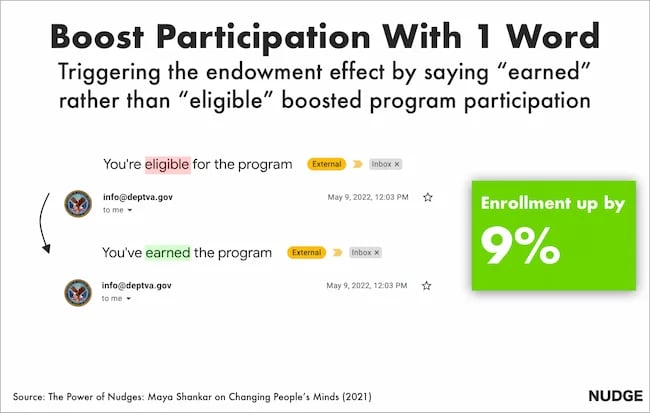
Inspired by these psychological tweaks to emails, I started to run my own tests.
Alongside my podcast Nudge, I’ve run 100s of email tests on my 1,000s of newsletter subscribers.
Here are the five best tactics I’ve uncovered.
1. Show readers what they’re missing.
Nobel prize winning behavioral scientists Daniel Kahneman and Amos Tversky uncovered a principle called loss aversion.
Loss aversion means that losses feel more painful than equivalent gains. In real-world terms, losing $10 feels worse than how gaining $10 feels good. And I wondered if this simple nudge could help increase the number of my podcast listeners.
For my test, I tweaked the subject line of the email announcing an episode. The control read:
“Listen to this one”
In the loss aversion variant it read:
“Don’t miss this one”
It is very subtle loss aversion. Rather than asking someone to listen, I’m saying they shouldn’t miss out. And it worked. It increased the open rate by 13.3% and the click rate by 12.5%. Plus, it was a small change that cost me nothing at all.
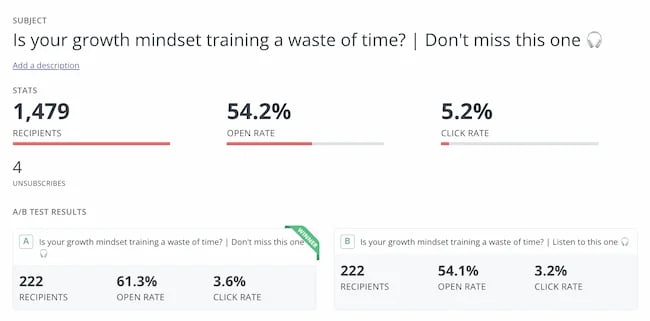
2. People follow the crowd.
In general, humans like to follow the masses. When picking a dish, we’ll often opt for the most popular. When choosing a movie to watch, we tend to pick the box office hit. It’s a well-known psychological bias called social proof.
I’ve always wondered if it works for emails. So, I set up an A/B experiment with two subject lines. Both promoted my show, but one contained social proof.
The control read: New Nudge: Why Brands Should Flaunt Their Flaws
The social proof variant read: New Nudge: Why Brands Should Flaunt Their Flaws (100,000 Downloads)
I hoped that by highlighting the episode’s high number of downloads, I’d encourage more people to listen. Fortunately, it worked.
The open rate went from 22% to 28% for the social proof version, and the click rate, (the number of people actually listening to the episode), doubled.
3. Praise loyal subscribers.
The consistency principle suggests that people are likely to stick to behaviours they’ve previously taken. A retired taxi driver won’t swap his car for a bike. A hairdresser won’t change to a cheap shampoo. We like to stay consistent with our past behaviors.
I decided to test this in an email.
For my test, I attempted to encourage my subscribers to leave a review for my podcast. I sent emails to 400 subscribers who had been following the show for a year.
The control read: “Could you leave a review for Nudge?”
The consistency variant read: “You’ve been following Nudge for 12 months, could you leave a review?”
My hypothesis was simple. If I remind people that they’ve consistently supported the show they’ll be more likely to leave a review.
It worked.
The open rate on the consistency version of the email was 7% higher.
But more importantly, the click rate, (the number of people who actually left a review), was almost 2x higher for the consistency version. Merely telling people they’d been a fan for a while doubled my reviews.
4. Showcase scarcity.
We prefer scarce resources. Taylor Swift gigs sell out in seconds not just because she’s popular, but because her tickets are hard to come by.
Swifties aren’t the first to experience this. Back in 1975, three researchers proved how powerful scarcity is. For the study, the researchers occupied a cafe. On alternating weeks they’d make one small change in the cafe.
On some weeks they’d ensure the cookie jar was full.
On other weeks they’d ensure the cookie jar only contained two cookies (never more or less).
In other words, sometimes the cookies looked abundantly available. Sometimes they looked like they were almost out.
This changed behaviour. Customers who saw the two cookie jar bought 43% more cookies than those who saw the full jar.
It sounds too good to be true, so I tested it for myself.
I sent an email to 260 subscribers offering free access to my Science of Marketing course for one day only.
In the control, the subject line read: “Free access to the Science of Marketing course”
For the scarcity variant it read: “Only Today: Get free access to the Science of Marketing Course | Only one enrol per person.”
130 people received the first email, 130 received the second. And the result was almost as good as the cookie finding. The scarcity version had a 15.1% higher open rate.

5. Spark curiosity.
All of the email tips I’ve shared have only been tested on my relatively small audience. So, I thought I’d end with a tip that was tested on the masses.
Back in 2012, Barack Obama and his campaign team sent hundreds of emails to raise funds for his campaign.
Of the $690 million he raised, most came from direct email appeals. But there was one email, according to ABC news, that was far more effective than the rest. And it was an odd one.
The email that drew in the most cash, had a strange subject line. It simply said “Hey.”
The actual email asked the reader to donate, sharing all the expected reasons, but the subject line was different.
It sparked curiosity, it got people wondering, is Obama saying Hey just to me?
Readers were curious and couldn’t help but open the email. According to ABC it was “the most effective pitch of all.”
Because more people opened, it raised more money than any other email. The bias Obama used here is the curiosity gap. We’re more likely to act on something when our curiosity is piqued.
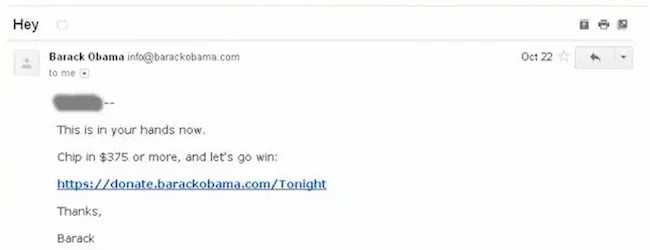
Loss aversion, social proof, consistency, scarcity and curiosity—all these nudges have helped me improve my emails. And I reckon they’ll work for you.
It’s not guaranteed of course. Many might fail. But running some simple a/b tests for your emails is cost free, so why not try it out?
This blog is part of Phill Agnew’s Marketing Cheat Sheet series where he reveals the scientifically proven tips to help you improve your marketing. To learn more, listen to his podcast Nudge, a proud member of the Hubspot Podcast Network.
-

 WORDPRESS7 days ago
WORDPRESS7 days agoTurkish startup ikas attracts $20M for its e-commerce platform designed for small businesses
-

 MARKETING6 days ago
MARKETING6 days agoRoundel Media Studio: What to Expect From Target’s New Self-Service Platform
-

 SEO6 days ago
SEO6 days agoGoogle Limits News Links In California Over Proposed ‘Link Tax’ Law
-
SEARCHENGINES6 days ago
Daily Search Forum Recap: April 12, 2024
-

 SEARCHENGINES7 days ago
SEARCHENGINES7 days agoGoogle Search Results Can Be Harmful & Dangerous In Some Cases
-
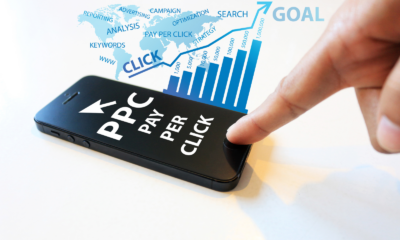
 SEO5 days ago
SEO5 days ago10 Paid Search & PPC Planning Best Practices
-
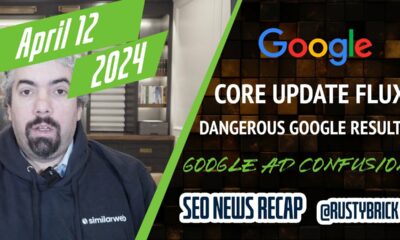
 SEARCHENGINES5 days ago
SEARCHENGINES5 days agoGoogle Core Update Volatility, Helpful Content Update Gone, Dangerous Google Search Results & Google Ads Confusion
-
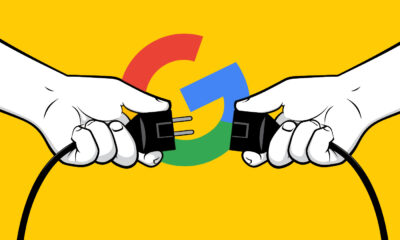
 SEO6 days ago
SEO6 days agoGoogle Unplugs “Notes on Search” Experiment














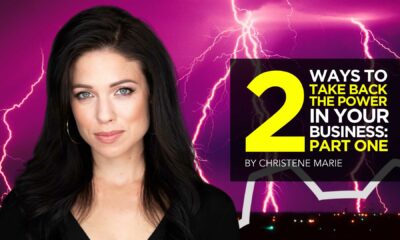

![5 Psychological Tactics to Write Better Emails → Download Now: The Beginner's Guide to Email Marketing [Free Ebook]](https://articles.entireweb.com/wp-content/uploads/2023/02/11-Free-Email-Hacks-to-Step-Up-Your-Productivity.png)
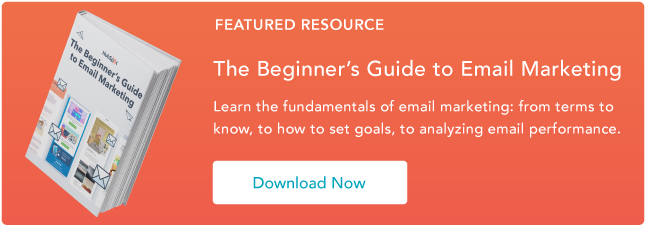

You must be logged in to post a comment Login